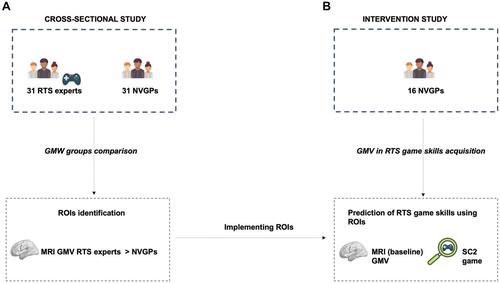当前位置:
X-MOL 学术
›
Ann. N. Y. Acad. Sci.
›
论文详情
Our official English website, www.x-mol.net, welcomes your
feedback! (Note: you will need to create a separate account there.)
Lenticular nucleus volume predicts performance in real‐time strategy game: cross‐sectional and training approach using voxel‐based morphometry
Annals of the New York Academy of Sciences ( IF 4.1 ) Pub Date : 2020-12-29 , DOI: 10.1111/nyas.14548 Natalia Kowalczyk-Grębska 1 , Maciek Skorko 2 , Paweł Dobrowolski 2 , Bartosz Kossowski 3 , Monika Myśliwiec 1 , Nikodem Hryniewicz 4 , Maciej Gaca 3 , Artur Marchewka 3 , Małgorzata Kossut 5 , Aneta Brzezicka 1, 6
Annals of the New York Academy of Sciences ( IF 4.1 ) Pub Date : 2020-12-29 , DOI: 10.1111/nyas.14548 Natalia Kowalczyk-Grębska 1 , Maciek Skorko 2 , Paweł Dobrowolski 2 , Bartosz Kossowski 3 , Monika Myśliwiec 1 , Nikodem Hryniewicz 4 , Maciej Gaca 3 , Artur Marchewka 3 , Małgorzata Kossut 5 , Aneta Brzezicka 1, 6
Affiliation

|
It is unclear why some people learn faster than others. We performed two independent studies in which we investigated the neural basis of real-time strategy (RTS) gaming and neural predictors of RTS game skill acquisition. In the first (cross-sectional) study, we found that experts in the RTS game StarCraft® II (SC2) had a larger lenticular nucleus volume (LNV) than non-RTS players. We followed a cross-validation procedure where we used the volume of regions identified in the first study to predict the quality of learning a new, complex skill (SC2) in a sample of individuals who were naive to RTS games (a second (training) study). Our findings provide new insights into how the LNV, which is associated with motor as well as cognitive functions, can be utilized to predict successful skill learning and be applied to a much broader context than just video games, such as contributing to optimizing cognitive training interventions.
中文翻译:

晶状体核体积预测实时策略游戏中的表现:使用基于体素的形态测量的横截面和训练方法
目前还不清楚为什么有些人比其他人学得更快。我们进行了两项独立研究,研究了实时策略 (RTS) 游戏的神经基础和 RTS 游戏技能习得的神经预测因素。在第一项(横断面)研究中,我们发现 RTS 游戏《星际争霸® II》(SC2)中的专家比非 RTS 玩家拥有更大的晶状体核体积(LNV)。我们遵循交叉验证程序,使用第一项研究中确定的区域量来预测在不熟悉 RTS 游戏的个体样本中学习新的复杂技能 (SC2) 的质量(第二项(训练)学习)。我们的研究结果为如何利用与运动和认知功能相关的 LNV 来预测成功的技能学习并应用于比视频游戏更广泛的环境提供了新的见解,例如有助于优化认知训练干预。
更新日期:2020-12-29
中文翻译:

晶状体核体积预测实时策略游戏中的表现:使用基于体素的形态测量的横截面和训练方法
目前还不清楚为什么有些人比其他人学得更快。我们进行了两项独立研究,研究了实时策略 (RTS) 游戏的神经基础和 RTS 游戏技能习得的神经预测因素。在第一项(横断面)研究中,我们发现 RTS 游戏《星际争霸® II》(SC2)中的专家比非 RTS 玩家拥有更大的晶状体核体积(LNV)。我们遵循交叉验证程序,使用第一项研究中确定的区域量来预测在不熟悉 RTS 游戏的个体样本中学习新的复杂技能 (SC2) 的质量(第二项(训练)学习)。我们的研究结果为如何利用与运动和认知功能相关的 LNV 来预测成功的技能学习并应用于比视频游戏更广泛的环境提供了新的见解,例如有助于优化认知训练干预。











































 京公网安备 11010802027423号
京公网安备 11010802027423号